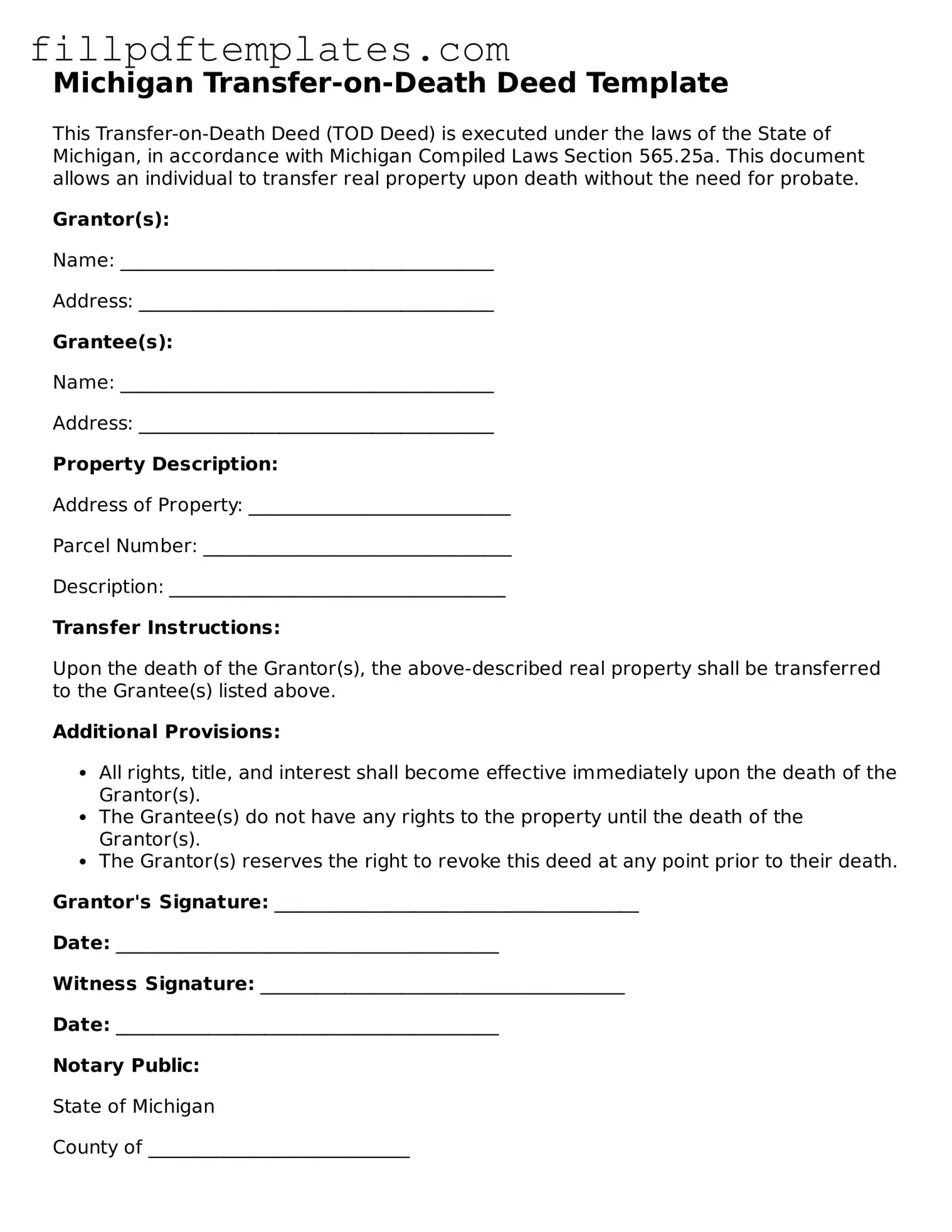Michigan Transfer-on-Death Deed Template
This Transfer-on-Death Deed (TOD Deed) is executed under the laws of the State of Michigan, in accordance with Michigan Compiled Laws Section 565.25a. This document allows an individual to transfer real property upon death without the need for probate.
Grantor(s):
Name: ________________________________________
Address: ______________________________________
Grantee(s):
Name: ________________________________________
Address: ______________________________________
Property Description:
Address of Property: ____________________________
Parcel Number: _________________________________
Description: ____________________________________
Transfer Instructions:
Upon the death of the Grantor(s), the above-described real property shall be transferred to the Grantee(s) listed above.
Additional Provisions:
- All rights, title, and interest shall become effective immediately upon the death of the Grantor(s).
- The Grantee(s) do not have any rights to the property until the death of the Grantor(s).
- The Grantor(s) reserves the right to revoke this deed at any point prior to their death.
Grantor's Signature: _______________________________________
Date: _________________________________________
Witness Signature: _______________________________________
Date: _________________________________________
Notary Public:
State of Michigan
County of ____________________________
Subscribed and sworn before me this ____ day of __________, 20__.
Notary Signature: __________________________
My Commission Expires: ____________________
